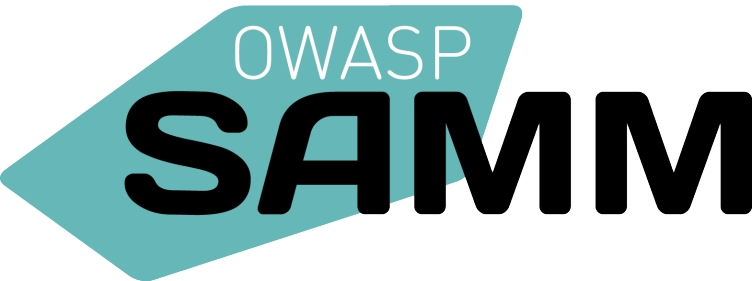OWASP SAMM 2.0 about it ?
OWASP (Open Web Application Security Project) SAMM (Software Assurance Maturity Model) is a framework that helps organizations assess and improve their software security practices. It provides a set of guidelines and best practices for managing software security throughout the entire software development life cycle (SDLC). The framework is organized into three maturity levels, with each level representing a different stage of development:
✅ In the modern world, it is very important to ensure the cybersecurity of the company. Visit our site https://security.studio, we will help you build information security.
In summary, OWASP SAMM is a framework that provides guidelines and best practices to help organizations improve their software security by providing maturity level and providing practices and actions to reach higher level of maturity.
- Level 1: Ad Hoc: Security is an afterthought, and there are no formal processes or practices in place.
- Level 2: Repeatable: Security is integrated into the SDLC, but practices are not yet well-defined or consistently applied.
- Level 3: Defined: Security is an integral part of the SDLC, and practices are well-defined and consistently applied.
✅ In the modern world, it is very important to ensure the cybersecurity of the company. Visit our site https://security.studio, we will help you build information security.
In summary, OWASP SAMM is a framework that provides guidelines and best practices to help organizations improve their software security by providing maturity level and providing practices and actions to reach higher level of maturity.
What are the benefits of implementing OWASP SAMM 2.0 ?

Implementing the OWASP SAMM 2.0 framework can provide several benefits for organizations, including:
- Improved security posture: By following the guidelines and best practices outlined in the OWASP SAMM 2.0 model, organizations can improve their overall security posture and reduce the risk of security incidents.
- Greater visibility into software security risks: The OWASP SAMM 2.0 framework provides a structured approach for assessing and managing software security risks, which can help organizations to better understand and prioritize the risks facing their organization.
- Increased efficiency: By implementing the framework, organizations can increase the efficiency of their software development and security processes, which can help to reduce the overall cost of software security.
- Better alignment with other standards: The OWASP SAMM 2.0 framework can help organizations to align their software security practices with other relevant standards and regulations, such as ISO 27001 and NIST 800-53, which can make it easier to comply with these standards and to integrate software security into existing frameworks.
- Improved compliance: By implementing the framework, organizations can improve their compliance with relevant laws, regulations and industry standards, which can help to reduce the risk of regulatory fines and legal action.
- Better collaboration: Implementing the OWASP SAMM 2.0 framework can help to foster better collaboration between different teams and stakeholders, such as development, IT operations, and security teams, which can lead to a more effective and efficient implementation.
- Improved metrics: Implementing the OWASP SAMM 2.0 framework can help organizations to establish better metrics for measuring the effectiveness of their software security efforts and to track progress over time.
- Continuous improvement: The OWASP SAMM 2.0 framework is designed to be flexible and adaptable, which allows organizations to continuously monitor and improve their software security posture over time.
The main mistake in implementing OWASP SAMM 2.0 in organizations.

Some common mistakes that organizations make when implementing the OWASP SAMM 2.0 framework include:
- Lack of clear objectives: Failing to establish clear objectives and a roadmap for the implementation of the framework can make it difficult to measure progress and determine the effectiveness of the implementation.
- Not considering the existing processes and culture: Failing to take into account the existing processes and culture of the organization can make it difficult to gain buy-in from staff and can lead to resistance to changes in the way things are done.
- Failing to provide ongoing training and education: Failing to provide ongoing training and education for staff on the OWASP SAMM 2.0 framework and relevant security best practices can make it difficult for staff to effectively implement the framework and can lead to inconsistencies in the way it is applied.
- Not reviewing and updating the action plan regularly: Failing to review and update the action plan regularly can make it difficult to track progress and make adjustments as needed, which can impede the success of the implementation.
- Focusing on point solutions: Organizations that focuses on implementing point solutions, such as security tools, instead of a holistic approach can miss important vulnerabilities, and might not fully improve the overall security posture.
- Not involving the right people: Not involving the right people in the process can lead to a lack of ownership and accountability, which can impede the success of the implementation.
- Not measuring progress or results: Failing to measure progress or results can make it difficult to determine the effectiveness of the implementation and to identify areas for improvement.
- Assign a clear ownership and accountability: Assign clear ownership and accountability for the implementation of the framework and ensure that the relevant parties understand their roles and responsibilities.
- Start small and scale up: Starting small and scaling up can help organizations to effectively manage the implementation process, to identify and address any issues that arise, and to build momentum for the overall effort.
- Prioritize risk management: When implementing the framework, make sure that you are prioritizing risk management over compliance. By focusing on the actual risks facing your organization, you can be sure that you're addressing the most critical security issues.
- Use metrics to measure effectiveness: Use metrics to measure the effectiveness of the implementation and to track progress over time. This can help you identify areas for improvement and to see the impact of the changes that you're making.
- Regularly review and update: Regularly review and update your policies, procedures, and guidelines to ensure that they remain relevant and effective.
- Communicate progress: Communicate progress and results to all stakeholders, including leadership, development teams, IT operations, and security teams. This will help ensure that everyone is aware of the status and progress of the implementation and any challenges or issues that arise can be quickly addressed.
- Continuously improve: Continuously improve your implementation of the framework. This may involve changes to existing processes, training and education for staff, and the implementation of new tools and technologies.
- Use the community: Take advantage of the OWASP community to share experiences, and to learn from others about best practices and challenges.
How I can better implemented OWASP SAMM 2.0 ?

Implementing OWASP SAMM in an organization can be a complex and multi-faceted process, but there are some general steps that organizations can take to ensure a successful implementation:
Implementing the OWASP SAMM framework is a process that needs the involvement of all stakeholders and departments, but with a well-planned, structured approach it will help organizations to better understand and manage the software security risks and improve the overall security posture.
Certainly, to have a successful implementation of the OWASP SAMM framework, it's important to have a clear understanding of the organization's software development life cycle (SDLC) and the specific security needs of the organization. Some specific steps that can be taken include:
✅ In the modern world, it is very important to ensure the cybersecurity of the company. Visit our site https://security.studio, we will help you build information security.
Ultimately, implementing the OWASP SAMM framework requires a significant commitment of time, resources, and expertise, but it can help organizations better understand and manage their software security risks and improve their overall security posture.
#cybersecurity #InfoSec #appsec #Security #DevOps #gadgets #coding#cybersécurité #DEVCommunity #DevSecOps #fintech #Pentesting#engineer #CICD #programmingisfun #Management #CISO #Digital#securitystudio #startup #samm #owasp Image by DCStudio on Freepik
- Get buy-in from leadership: Software security is a business risk and requires the support of leadership to be successful. Make sure that key stakeholders understand the importance of software security and are committed to implementing the framework.
- Assess your current state: Conduct an initial assessment of your current software security practices and identify any gaps. Use the OWASP SAMM assessment tool to determine your organization's maturity level and identify areas for improvement.
- Develop an action plan: Based on the results of the assessment, develop an action plan that outlines the specific activities and best practices that your organization will implement. This plan should be aligned with your organization's goals and objectives and should include timelines, resources, and metrics for tracking progress.
- Implement the activities: This is the process of implementing the activities and best practices outlined in the action plan. It may involve changes to existing processes, training and education for staff, and the implementation of new tools and technologies.
- Continuously monitor and improve: Software security is an ongoing process and requires continuous monitoring and improvement. Use the metrics from the action plan to track progress and identify areas for improvement. Conduct regular assessments to determine your organization's maturity level and update the action plan as needed.
- Align with relevant standards: Make sure that your implementation of the framework is aligned with any relevant standards or regulations, such as ISO 27001 or NIST 800-53. This can help ensure that your software security practices are in compliance and can be more easily integrated into existing frameworks.
Implementing the OWASP SAMM framework is a process that needs the involvement of all stakeholders and departments, but with a well-planned, structured approach it will help organizations to better understand and manage the software security risks and improve the overall security posture.
Certainly, to have a successful implementation of the OWASP SAMM framework, it's important to have a clear understanding of the organization's software development life cycle (SDLC) and the specific security needs of the organization. Some specific steps that can be taken include:
- Define roles and responsibilities: It's important to clearly define the roles and responsibilities of the individuals and teams that will be involved in implementing the framework, including the software development team, IT operations team, and the security team.
- Establish a governance structure: Create a governance structure that includes a steering committee or working group to oversee the implementation of the framework and ensure that it is aligned with the organization's goals and objectives.
- Develop and implement policies: Develop and implement policies and procedures that align with the best practices outlined in the OWASP SAMM model. These policies should cover areas such as secure coding, incident management, and threat modeling, and should be tailored to the specific needs of the organization.
- Training and education: Provide training and education for staff on the OWASP SAMM model and the specific security practices that the organization will be implementing. This will help ensure that staff have the knowledge and skills they need to effectively implement the framework.
- Implement security tools and technologies: Implement security tools and technologies that align with the best practices outlined in the OWASP SAMM model. This may include tools for threat modeling, secure coding, and incident management.
- Continuously monitor and improve: Continuous monitoring and improvement is an essential part of implementing the OWASP SAMM framework. Monitor progress and compliance with the framework regularly, review metrics and key performance indicators, and use the results to update policies, procedures, and guidelines.
- Communication: Keep open lines of communication with all stakeholders, including leadership, development teams, IT operations, and security teams. This will help ensure that everyone is aware of the status and progress of the implementation, and any challenges or issues that arise can be quickly addressed.
✅ In the modern world, it is very important to ensure the cybersecurity of the company. Visit our site https://security.studio, we will help you build information security.
Ultimately, implementing the OWASP SAMM framework requires a significant commitment of time, resources, and expertise, but it can help organizations better understand and manage their software security risks and improve their overall security posture.
#cybersecurity #InfoSec #appsec #Security #DevOps #gadgets #coding#cybersécurité #DEVCommunity #DevSecOps #fintech #Pentesting#engineer #CICD #programmingisfun #Management #CISO #Digital#securitystudio #startup #samm #owasp Image by DCStudio on Freepik
